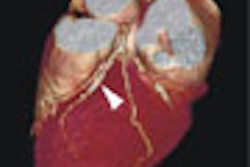Dear AuntMinnie Member,
We often get requests from radiologic technologists looking for resources on patient positioning for radiographic studies. Fortunately, we're able to direct them to a series of articles authored for AuntMinnie.com several years ago by Dr. Naveed Ahmad, the founder of radiology education Web site RadQuiz.com.
But Dr. Ahmad's highly useful articles were never available in a single location on AuntMinnie.com -- until now, that is. This week, we're pleased to announce the availability of the X-Ray Patient Positioning Manual, a collection of 16 articles on radiography patient positioning in our Digital X-Ray Community.
Topics in the manual cover a wide range of radiography studies, from the pelvis and proximal femur to an upper gastrointestinal series. You'll find them all in an attractively designed 152-page PDF that you can download wherever you have an Internet connection (but make sure it's a fast one -- the manual weighs in at 15.4 MB).
To find the manual, just click here, or visit our Digital X-Ray Community at xray.auntminnie.com.
Update on PET/MRI scanner
In other news, German researchers provide an update on their work on an integrated PET/MRI scanner in a story that's appearing in our Molecular Imaging Digital Community.
The researchers reported on the unique challenges involved in developing a combined system, such as the impact of MRI's magnetic fields on PET photomultiplier tubes (PMTs). But they've been able to overcome these obstacles with technology such as PMTs based on semiconductors that are immune to magnetic fields. Get a report on their progress by clicking here.
In related news in the community, a new study released this week from the U.S. National Oncologic PET Registry (NOPR) found that PET scans can change patient management decisions in more than one in three cancer patients. The study examined more than 23,000 patients at 1,200 PET facilities in the U.S., and the results could be used to influence changes in Medicare and Medicaid reimbursement for PET.
Get the details on the study by clicking here, or visit the Molecular Imaging Digital Community at molecular.auntminnie.com.



















